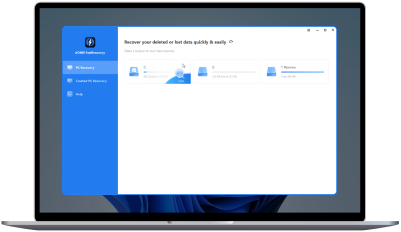Why Pictures Won't Download to Computers?
If you find your pictures won’t download to computers, don’t worry, you can read this post to follow the solutions to resolve the problem.
Scenario: Why my pictures won’t download to my computer?
For the majority of users, downloading and transferring the majority of their daily activities. Nevertheless, certain users have reported that their images are unable to be downloaded to their devices. If these issues also concern you, please continue reading.
Furthermore, smartphones have revolutionized how we live and work. Additionally, a significant number of users inquire about the process of downloading images from their smartphones to their personal computers. Therefore, there are two potential outcomes for you.
Possible reasons about pictures won’t download to computers
😫 Damaged table: Cables that are damaged will not function because they cannot be imported. Not to mention the act of transferring or storing data.
📶 Inadequate Wi-Fi: An unstable internet connection may serve as an impediment to the transfer or downloading of photographs.
📜 Permission settings: Access rights allow you to read, write, or execute other operations. If not, you will be denied the ability to download or transfer photos to personal computers.
🐞 Malware infection: Files may be automatically deleted by harmful malware or viruses. Subsequently, there may be no indication of the images you desire.
Scenario 1. Download photos from PC
This scenario is designed to assist you in the direct download of photos from Windows computers, as its name implies.
1. Verify and adjust the permissions of computers
Access rights are intended to facilitate the modification of settings or the execution of sophisticated performances, as previously mentioned. Please consult the subsequent procedures.
Step 1. Right-click on the folder in which you wish to save the downloaded photos and select "Properties" and "Security."
Step 2. Locate your username and select the "Edit" icon.
Step 3. Check the Allow box beside Full Control, then click Apply > OK.
2. Restore the default parameters for the Pictures folder
Computers are unable to retrieve images. It is possible that you can resolve this issue by returning your Pictures directory to its original location. Let us demonstrate its functionality.
Step 1. Press “Win + E” to open File Explorer. Then right-click on Pictures and select the “Properties” option.
Step 2. Under the Location tab, click the “Restore Default” button. Then click Apply > OK to save these changes.
3. Recover deleted photos from computers via professional recovery tool
It is undeniable that deleted photographs are unavailable for download by users due to their removal from the Windows operating system. Therefore, is it possible to retrieve expunged photographs from computers to have them reappear?
There is no more effective method than utilizing professional photo recovery software, such as AOMEI Partition Assistant for Recovery, as numerous users have not implemented data loss prevention measures, such as backups.
- Robust capabilities: Retrieve deleted and lost MS Office files, folders, compressed files, photographs, videos, audio, and over 2000 file types from HDD, USB, and SD cards, etc.
- Simple to locate: You can search for your desired folders by Path, Filename, Date, and other criteria during Quick Scan and Deep Scan.
- Convenient: Maintain the original filename, path, and format for the deleted files.
- Exceptional compatibility: Supports the following file systems: NTFS, FAT32, exFAT, and ReFS on Windows 11/10/8/7 and Windows Server 2025/2022/2019/2016/2012.
Step 1. Install and launch AOMEI Partition Assistant for Recovery. Choose the exact partition or disk where your data lost and click Scan.
Step 2. Then, the recovery tool start to scan and search. lt will execute the “Quickly Scan" first to find your deleted data fast, and then execute the “Deep Scan" for searching other lost data.
Step 3. Once the scan is completed, all deleted files, recycle bins and other missing files will be displayed. Please select the file you would like to recover and then click "Recover".
Step 4. Then, select a folder path to save your recovered files.
Step 5. Wait patiently for this process of recovering ends.
Scenario 2: Transferring images from an iPhone to a computer
I am unable to import my photographs onto my personal computer. This is a common complaint among both Apple and Android consumers. Consider iOS devices as an illustration.
iPhone users can access iCloud.com to obtain photos, as the same Apple account can sync all data across multiple Apple devices. To determine whether or not you have activated iCloud Photos, navigate to Settings > Apple ID > iCloud > APPS USING ICLOUD. Pictures that you desire may not be visible in the absence of iCloud Photos. Then it is advisable to adopt the iOS backup and transfer tool that follows.
Conclusion
Are you unable to download your photographs into your computer? Are you curious about the reason why my photographs are unable to be imported onto my personal computer? Please find solutions by looking at the scenarios that match them. To summarize, if you are eager to recover images from machines that do not have backups, the best option may be to use photo recovery software such as AOMEI Partition Assistant for Recovery rather than any other option.
